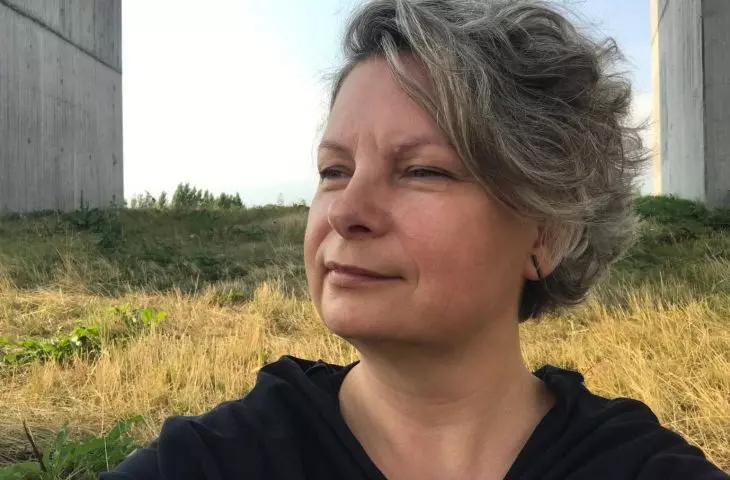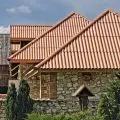Reserve in your calendars the days from September 5 to 7! During that time, the spaces of EXPO XXI in Warsaw will turn green, hosting the 31st edition of the International Trade Fair of Plants, Horticultural Technology and Landscape Architecture "Zieleń to Życie", which is organized by the Polish Nurserymen Association and the Greenery Promotion Agency. Part of the event will be the Mocno Zielone Miasto conference, during which Urszula Forczek-Brataniec, professor at the Cracow University of Technology, landscape architect and designer {tag:pracownia} will talk about the role of communication in the city.
Ola Kloc: Part of the "Zieleń to Życie" fair is Mocno Zielone Miasto conference. How do you imagine such a green city in reality?
Urszula Forczek-Brataniec: My imagination suggests to me, now that we have a hot summer, an image of shady streets full of pedestrians and bicycles, on which people are heading to work, school, the store, walking fast or taking a stroll, while the treetops protect them from the heat. A river with wild greenery and a park, market and playground are also within reach. Such a state of affairs in many neighborhoods seems unattainable, but this is the image I remember from my childhood :)
You can say that in this image reflects the idea of a settlement. A place to live that provides access to basic services and allows you to move around freely by various means. As in everything, the important thing in the Mocno Zielone Miasto is balance.
The city is a density of development and communication. It is dominated by accumulation, intensity, accumulation, in order to make it easier to live, and also in order for there to be open areas outside the city, space for free flowing air, water, opening up wide vistas for the eyes and future needs.
Today, as cities grow more and more intense, the balance between built-up areas and green spaces is becoming one of the basic criteria for quality of life.
Pandemic times have proven this acutely, and research on the impact of greenery on our daily lives confirms it. It is important to talk about it and to exert grassroots pressure so that it affects the misaligned housing policies and irrational management of spatial resources today.
Zieleń to Życie fair
© organizers archive
Ola Kloc: What tools do we have at our disposal to create green cities? What stands in the way of their implementation?
Urszula Forczek-Brataniec: The design of greenery in the city is closely related to the planning and design system. It is important at any scale. This aspect is emphasized and accentuated by the concept of green infrastructure, which was created in the 1990s. It emphasizes the technical requirements of greenery, that like electrical or communications infrastructure, it must be continuous, properly connected to parts of the city and accessible. Poland has a spatial planning system that is just now undergoing a significant transformation. There are tools in this system to plan green infrastructure, an efficient system that builds a resilient city. Unfortunately, the lack of regulation in the form of mandatory urban indicators, the previous possibility of obtaining a zoning decision incompatible with the study of land use conditions and directions, caused the best models to lose out to the interests of private investors, who have been dictating the rules of city building in our country for 30 years. In addition, our regulations still lack an important link, the obligation to carry out an urban design. A stage that would give spatial shape to the plans that decide land use.
Ola Kloc: During your speech at the Mocno Zielone Miasto Conference, on September 6 at the "Zieleń to Życie" International Fair, you will be talking about communication in the city — what role does it play in a sustainable city landscape?
Urszula Forczek-Brataniec: Communication is the warp of the city. It gives it shape, character. It determines its use and perception. Streets are the basic elements of a city's spatial structure. Their proportions, orientation with respect to the sides of the world are important, they play a communicative role, but they also determine the illumination of buildings, the ventilation of the city. Communication in the city must be continuous, it is primarily an object of engineering, but also shapes the landscape of the city. It plays out on several levels. There are thoroughfares, ring roads, access roads, their character, shape, aesthetics create the image of the city, both the superficial one, when we just pass by the city, admiring its skyline, and the deeper one, when we walk through the city.
While transportation used to be treated as a space, its microclimate, temperature relationship with the environment was important, today it is often reduced to mere lines on a map, and the unfavorable travel environment is compensated for by air conditioning in the car. We also too easily give up on the beauty of this spatial sphere, contenting ourselves with good pavement and capacity.
Meanwhile, urban transportation has great potential in shaping a beautiful and harmonious city. Communication can play a key role in strengthening green infrastructure. The communication system is because it must be continuous, which can provide the basis for supplementing or correcting the green network system. The slogan "grey to green" illustrates this perfectly. By greening roads, we can turn them into green corridors under certain conditions.
Ola Kloc: What implementations can we take examples from when creating transportation solutions in our cities?
Urszula Forczek-Brataniec: There are many examples, and they can be cited regarding different scales of action. Certainly, it is worth mentioning the idea of greenways of automobile roads from the mid-19th century, which were intended to provide connections between neighborhoods in American cities. Driving along such a greenway by car was supposed to be a new form of walking in a beautiful environment. These plans are now being rediscovered, and in Boston, for example, work is underway to restore and complete Frederick L. Olmsted's plans in this regard.
Another example is re-use efforts, creating new pedestrian and bicycle transportation corridors in the form of greenbelts or wedges on the site of former highways or railroads (Madrid, Barcelona, Berlin, etc.). Turning to the urban scale, there is currently a huge amount of activity related to the redesign and greening of streets and squares. There are debates and discussions on this topic, citizen budgets are being submitted, and beautiful realizations are being created. Important in these activities is the use of the knowledge of specialists, historians, road engineers, architects, landscape architects, dendrologists, to design these interventions not only beautifully, but also wisely and sustainably.
The network of streets in a city creates a number of opportunities. We can weave various threads and variants of the city' s fabric on this structure-warp. Rethinking it can provide space for roads, woonerfs, pedestrian areas and arcades, providing access for all users.
Ola Kloc: The slogan of this year's "Zieleń to Życie" is "Know the power of synergy!" — how do you understand them? What do you expect from this event? Why do you think it is worth taking part in it?
Urszula Forczek-Brataniec: Synergy for me, a designer, is the combination of several approaches in one task. It's a special kind of cooperation, which is more than just the sum of experiences, it's a new quality born from interaction. The result is an added value that is difficult to foresee and imagine under other circumstances. Therefore, it seems invaluable to integrate different specialists in joint action, to be able to dialogue and seek the best solutions. Education towards openness to the knowledge of others and teamwork is also important in this context.
Communication in the city is an ideal example of a field where cooperation is necessary and can bring many benefits, and at the same time a space where we emphatically feel the lack of this cooperation in failed solutions. The ability to collaborate is important, especially today, when society is becoming increasingly atomized and knowledge fields are becoming increasingly fragmented. Specialists have very in-depth knowledge, but from a narrow scope, so the need for confrontation and integration seems essential.
Events related to the urban landscape, and especially those devoted to the role of communication in the context of green spaces, are held very rarely. There are spirited discussions on these topics in the media, while we still have too few conversations spreading knowledge and professional expertise. Meetings that deal with specifics, fight against limitations and show new possibilities are extremely important, especially those that present different perspectives from different points of view. In view of this, thank you for raising this topic, thank you for the invitation and for the opportunity to speak. I recommend the Conference to all city residents, especially those connected and interested in green issues.
This year's edition of the fair will last from September 5 to 7
© organizers archive
You can read more about the challenges of urban greenery, the latest trends in shaping green cities and the program of this year's fair in an interview with Joanna Filipczak, president of Agencja Promocji Zieleni, the organizer of the event: Green is Life. Interview with Joanna Filipczak, president of Agencja Promocji Zieleni
Registration for professionals available at: rejestracja.zielentozycie.pl


























